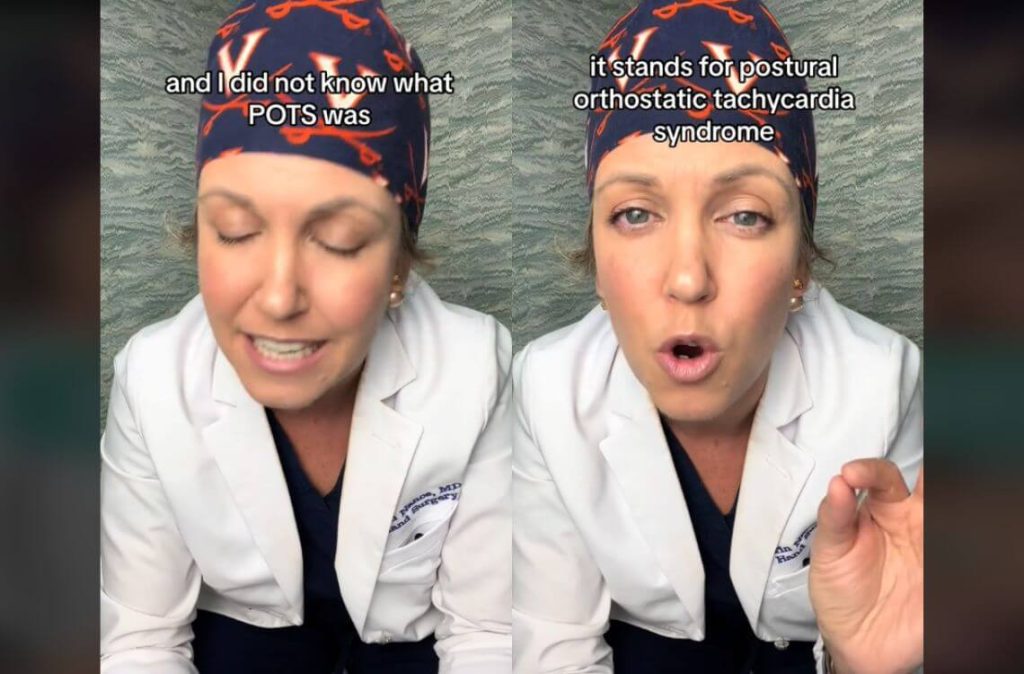Have you heard of POTS?
If your answer is no, there’s a chance that your doctor might not about it either.
Dr Erin Nance, an orthopaedic surgeon shares that she’s never heard of this illness until TikTok.
What Is POTS
POTS is short for postural orthostatic tachycardia syndrome.
Postural refers to something related to your posture, when you’re standing versus lying down.
Orthostatic describes the normal response of your body’s nervous system to what happens when your blood pressure is lower when you’re lying flat to what happens when you stand up.
Tachycardia means fast heart rate and finally, syndrome means a collection of symptoms or findings.
Dr Erin explained that POTS is a dysfunction of your autonomic nervous system.
It’s a condition that causes your heart to beat faster than normal when you’re standing up from a sitting or lying down position.
POTS is considered to be one of the most misdiagnosed illnesses, according to Dr Erin.
This fact is supported by a study with more than 700 patients.
Out of those patients, 69% of them were misdiagnosed for anxiety disorder instead of POTS.
Not only that, Dr Erin also mentioned that it’s hard to diagnose this illness as there’s no blood test for it, there’s no visible sign, biopsy and imaging is also not possible.
A way to test for POTS is a tilt test, where your doctor will measure your heart rate while you’re lying down compared to standing up.
This illness is also not new, it was first described back in 1940.
Females aged 20 to 50 are most likely to get this illness but it can also happen to males.
Symptoms of POTS
This illness and its symptoms might differ from person to person.
Some of the symptoms of POTS according to Cleveland Clinic includes:
- dizziness
- fainting or near fainting
- brain fog
- racing heart rate
- fatigue
- anxious
- shortness of breath
- chest pain
Treatment for POTS
Unfortunately, due to limited research, there’s currently no cure for POTS.
Healthcare providers would instead use several strategies to manage the illness.
As the illness is different for everyone, the treatment suggested is individualised according to your symptoms.
The main forms of treatment include:
1. Exercise and Physical Activity
It is suggested that reclined aerobic exercise, like swimming and rowing has the best results.
Strengthening your core and leg muscles are also helpful.
2. Diet and Nutrition
You should increase your sodium intake in your diet from 3,000 mg to 10,000 mg per day.
Drinking enough water daily can also help with the illness.
Your doctor might also suggest wearing medical compression socks to help push blood up from your legs to reduce the symptoms.
It’s Not Life-Threatening
This illness is not life-threatening but it can interfere with your daily living and tasks greatly.
Remember to talk with your doctor if you suspect you have POTS.
If you are diagnosed with it, talk with the doctor what you can do to help relieve it.
If you’ve been diagnosed with this illness, do let us know what’s your experience and what you did to help you.
Disclaimer: The information provided in this article is for informational purposes only and should not be considered as medical advice from Motherhood. For any health-related concerns, it is advisable to consult with a qualified healthcare professional or medical practitioner.
For more insightful stories and fun recipes, stay tuned to Motherhood Story!
